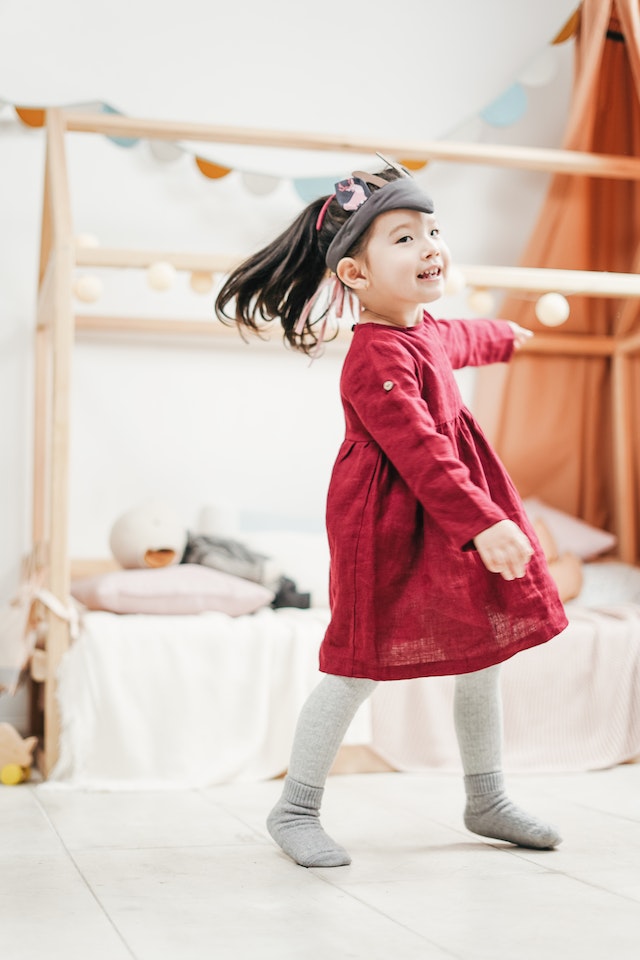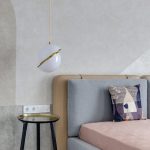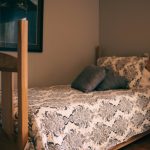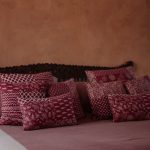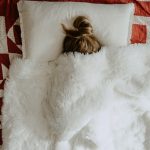As children transition from their cribs to toddler beds, they begin a new chapter of growth and development. One key aspect of this transition is the bedding they use. It’s essential to ensure that the bedding meets their unique needs in terms of comfort, safety, and even design. This article offers an overview of toddler bedding and some guidelines for making the best choices for your little one.
Contents
What is Toddler Bedding?
Toddler bedding is specially designed and sized for children who have outgrown their crib but are not yet ready for a regular-sized bed. It generally fits on a toddler-sized mattress, which is typically the same size as a crib mattress but might be used on a lower bed frame or a transitionary toddler bed.
Key Considerations:
- Material and Comfort: Toddlers have sensitive skin, so it’s important to choose bedding made from soft and hypoallergenic materials. Organic cotton, bamboo, and jersey are popular choices. Avoid materials that are too rough or can cause allergic reactions.
- Fit: Ensure that the sheets fit snugly around the mattress. Loose sheets can pose an entanglement risk.
- Safety: Avoid bedding with small detachable parts or decorations that can pose a choking hazard. Also, consider purchasing bedding that is flame-resistant.
- Temperature Regulation: Ensure the bedding is suitable for the climate. For colder climates, thicker quilts or comforters are ideal. In warmer climates, a light blanket or just a sheet will suffice.
- Design and Theme: Toddlers often develop attachments to particular colors, characters, or themes. Selecting bedding that resonates with their interests can make bedtime more enticing.
Types of Toddler Bedding
- Fitted Sheets: These are designed to fit snugly over the toddler mattress. They’re essential and should be bought in multiples for convenience during laundry days.
- Flat Sheets: Optional for toddlers, some parents prefer using only a fitted sheet and a comforter to minimize the risk of entanglement.
- Comforters: Light, fluffy, and warm, these should be appropriately sized for a toddler bed.
- Pillows: Toddler-sized pillows are smaller and are the perfect size for young children. Remember, infants should not use pillows due to the risk of suffocation.
- Mattress Protectors: Helpful for those potty training nights, these protect the mattress from any accidental spills or leaks.
- Blankets: Choose based on the climate and your child’s preference. Some toddlers prefer the soft feel of a plush blanket, while others might want a lightweight muslin type.
Tips for Care
- Wash Before First Use: Always wash new bedding before placing it on your toddler’s bed to remove any residual chemicals or contaminants from the manufacturing process.
- Follow Care Instructions: Different materials have different care instructions. Following them ensures longevity and maintains the material’s softness.
- Regular Cleaning: Toddlers can be messy! Regular washing (at least once a week or after any spills) helps maintain hygiene.
- Natural Cleaners: Consider using natural or hypoallergenic detergents to avoid any skin reactions.
Choosing the right toddler bedding is a blend of practicality, safety, and personal preference. By prioritizing your child’s comfort and safety while also allowing them a say in the design or theme, you create a sleep environment that is both secure and enjoyable. Remember, a well-rested toddler is a happy toddler!
Tips for Buying Toddler Bedding
When you’re setting up a cosy space for your toddler, bedding plays a crucial role. Not only does it contribute to a good night’s sleep, but it can also be a centrepiece of the room’s decor. Here are some tips to consider when buying toddler bedding:
Safety First:
- Firm Fit: Sheets should fit snugly around the mattress. Loose sheets can become entanglement risks.
- Choking Hazards: Avoid bedding with small detachable parts or decorations that could pose a choking risk.
- Avoid Bumpers: Contrary to popular belief, crib bumpers can pose a suffocation risk. They’re not recommended for toddlers.
Consider Material:
- Hypoallergenic: If your child has allergies, consider hypoallergenic materials.
- Softness: Materials like cotton (especially organic), bamboo, and jersey are soft and gentle on a toddler’s sensitive skin.
- Durability: Look for bedding that can withstand frequent washing.
Temperature Matters:
- Seasonal Bedding: Depending on where you live, you might need different bedding for different seasons.
- Breathability: Breathable fabrics will prevent your child from overheating.
Design and Personalization:
- Child’s Preference: As they grow, toddlers develop likes and dislikes. If they’re attached to a certain color or cartoon character, consider getting bedding with that theme.
- Room Theme: Match the bedding with the room’s overall decor or theme.
Size and Fit:
- Standard Size: While most toddler beds fit crib-sized mattresses, always double-check the measurements.
- Growth Consideration: It’s wise to think about how long you intend your child to use this bedding. If you plan on transitioning them to a larger bed soon, you might consider different bedding options.
Read Reviews:
- Other parents’ experiences can be incredibly valuable. Reviews can give insights into the durability, comfort, and true look of the bedding.
Budget:
- Set a budget beforehand. While it’s essential to have quality bedding, there are good options available at various price points.
- Consider investing more in items that will be frequently used, such as fitted sheets.
Ease of Cleaning:
- Washability: Toddlers can be messy. Choose bedding that can be easily thrown in the washing machine.
- Color: Lighter colors might show stains more easily than darker or patterned options.
Return Policy:
Always check the return policy when buying. If the bedding doesn’t fit or isn’t comfortable for your child, you’ll want the option to return or exchange it.
Consider Extras:
- Think about if you need matching window treatments, rugs, or wall decor. Some bedding sets come with matching room decor accessories.
Buying bedding for your toddler is a combination of functional choices and personal preferences. With safety as a priority and comfort as a close second, you can create a restful haven for your little one.
Example of Toddler Bedding
Product Name: DreamyClouds Toddler Bedding Set
Description: The DreamyClouds Toddler Bedding Set is a delightful combination of softness and whimsy, perfect for your little one’s transition from crib to toddler bed.
Features:
Materials:
- Made from 100% organic cotton, ensuring a soft and gentle touch against your toddler’s sensitive skin.
- The fabric is hypoallergenic, reducing the risk of allergic reactions.
Design:
- The set features a charming sky-blue base color adorned with fluffy white cloud illustrations.
- Complementary pillowcase showcases a rainbow design, adding a touch of vibrant color.
Set Includes:
- One fitted sheet, designed to snugly fit a standard toddler or crib-sized mattress.
- One flat sheet.
- One toddler-sized pillowcase.
- One lightweight comforter, filled with hypoallergenic polyester and showcasing a reversible design – clouds on one side and rainbows on the other.
Safety:
- Sheets are designed with deep pockets and elastic edges, ensuring they remain in place throughout the night.
- No loose embellishments or threads, reducing choking hazards.
- The material is naturally flame-resistant, adding an extra layer of safety.
Easy Care:
- Machine-washable on a gentle cycle.
- Can be tumble dried on low heat.
- The use of mild, hypoallergenic detergents is recommended.
Matching Accessories (Sold Separately):
- DreamyClouds blackout curtains: Perfect for ensuring uninterrupted afternoon naps.
- DreamyClouds plush throw blanket: Ideal for snuggling during story time.
Customer Reviews:
- Jamie L.: “My 2-year-old loves this set! She’s always excited for bedtime now, often pointing out the clouds and rainbow. The quality is superb, and it’s held up perfectly even after several washes.”
- Alex P.: “Soft, comfortable, and the design is just adorable. My son adores the rainbow on the pillowcase. It’s a great purchase, and I’m considering buying the matching curtains.”
Price: $59.99
Availability: In stock; ships within 2-3 business days.
Note: The above is a fictional example of toddler bedding. Any resemblance to real products, brands, or persons is purely coincidental.
Chart Table of toddler bedding
Unfortunately, I can’t create visual tables or charts here, but I can lay out a text-based table for you. Let’s say you’re comparing three popular toddler bedding sets. Here’s how a chart table might look in text form:
Toddler Bedding Comparison Chart
| Feature/Brand | DreamyClouds Set | StarryNights Collection | JungleSafari Kit |
|---|---|---|---|
| Material | 100% Organic Cotton | Bamboo-Rayon Blend | Poly-Cotton Blend |
| Included Items | Fitted Sheet, Flat Sheet, Pillowcase, Comforter | Fitted Sheet, Pillowcase, Quilt | Fitted Sheet, Pillowcase, Comforter, Bed Skirt |
| Design Theme | Clouds & Rainbows | Stars & Moons | Jungle Animals |
| Hypoallergenic | Yes | Yes | No |
| Machine Washable | Yes | Yes | Yes |
| Price | $59.99 | $64.99 | $49.99 |
| Customer Rating | 4.8/5 | 4.6/5 | 4.7/5 |
This table provides a side-by-side comparison of three hypothetical toddler bedding sets. If you’re working on a document or a website, you can recreate the above as a visual table or chart to provide a clearer view for your audience.
Size Chart Table of toddler bedding
Toddler bedding often adheres to standard sizing, especially since the mattresses for cribs and toddler beds are usually the same size. Here’s a text-based size chart table for common toddler bedding items:
Toddler Bedding Size Chart
| Item | Standard Size (in inches) | Notes |
|---|---|---|
| Crib/Toddler Mattress | 28 x 52 | Standard size for both cribs and toddler beds. |
| Fitted Sheet | 28 x 52 | Designed to fit snugly over a toddler mattress. |
| Flat Sheet | 42 x 70 | Slightly larger to allow tucking in. |
| Comforter/Quilt | 36 x 50 | Size can vary; this is a common dimension. |
| Pillowcase | 12 x 16 | Toddler pillows are smaller than standard ones. |
| Blanket | 30 x 40 to 40 x 60 | Size range; some parents might opt for larger blankets. |
| Mattress Protector | 28 x 52 | Fitted or strapped styles available. |
When shopping, always check the specific measurements provided by manufacturers, as there can be slight variations. This table offers standard dimensions to help guide your purchase. If you plan to display this on a website or in a document, a visual table format would be more user-friendly.
List of top 10 worldwide toddler bedding companies with web address
As of my last training data in September 2021, here are some top-rated and popular toddler bedding companies, based on factors like product quality, reviews, and brand recognition. Please note that the popularity and rankings can change over time, so always do some updated research before making any decisions. Here’s a list of some notable brands and their web addresses:
1.Pottery Barn Kids
Website: www.potterybarnkids.com
- Aden + Anais
Website: www.adenandanais.com
- Crate & Kids (from Crate & Barrel)
Website: www.crateandbarrel.com/kids
- Burt’s Bees Baby
Website: www.burtsbeesbaby.com
- Carter’s
Website: www.carters.com
- The Land of Nod
Website: www.landofnod.com (Please note they’ve integrated with Crate & Kids)
- IKEA
Website: www.ikea.com
- BabyBjörn
Website: www.babybjorn.com
- Skip Hop
Website: www.skiphop.com
- L.L. Bean Kids
Website: www.llbean.com
While these companies offer a wide range of products beyond just toddler bedding, they’re renowned for their quality in children’s products and have a selection of toddler bedding items. Always check customer reviews and return policies before purchasing.
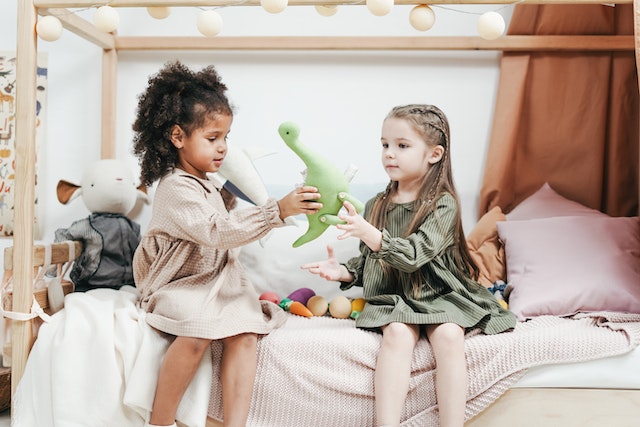
Frequently Asked Questions about toddler bedding
Here’s a list of frequently asked questions (FAQs) related to toddler bedding:
What is the standard size for toddler bedding?
Toddler beds usually fit standard crib-sized mattresses, which measure approximately 28 x 52 inches.
Is there a difference between crib bedding and toddler bedding?
While the mattress size is typically the same, toddler bedding often includes a pillow and pillowcase, which aren’t recommended for younger babies due to suffocation risks. Toddler sets may also feature designs more appealing to toddlers than infants.
When should I transition from crib bedding to toddler bedding?
The transition often occurs when moving a child from a crib to a toddler bed, which can be anywhere from 18 months to 3 years old, depending on the child’s readiness and size.
Is it safe for my toddler to use a pillow?
By the time they transition to a toddler bed, most toddlers are safe to use a small, firm pillow. Still, always monitor your child to ensure they’re using it safely.
How often should I wash toddler bedding?
It’s generally recommended to wash sheets weekly, but factors like allergies, accidents, or illnesses might necessitate more frequent washing.
What materials should I look for in toddler bedding?
Common materials include cotton, organic cotton, bamboo, and polyester blends. Consider hypoallergenic materials if your child has allergies.
How can I ensure the bedding is safe for my toddler?
Avoid bedding with small, detachable parts, ensure sheets fit snugly, and select breathable fabrics. Also, steer clear of crib bumpers, which can pose a suffocation risk.
Do toddlers need waterproof mattress protectors?
Many parents opt for waterproof protectors to safeguard against accidents during the potty-training phase.
How many bedding sets should I have for my toddler?
It’s convenient to have at least two sets, so you always have a fresh set available during laundry days or after accidents.
Can I use regular twin bedding for my toddler bed?
While the mattress sizes are different, you can use twin-sized blankets or comforters, but they might hang over the sides more than toddler-sized bedding would. Twin sheets won’t fit a toddler mattress properly.
These FAQs cover common concerns and queries parents might have. Always consider consulting pediatricians or child care experts for specific guidance on some of these topics.
Conclusion
How to choose toddler bedding essential tips. Choosing the right toddler bedding is more than just a decorative decision; it’s about ensuring the comfort, safety, and well-being of our youngest family members as they grow. As they transition from their cribs to toddler beds, it’s essential that they have bedding that supports their changing needs, both in terms of size and design preferences. From understanding the right materials to recognizing safety concerns, parents are equipped with a myriad of choices and considerations. Brands worldwide have responded to these needs with innovative, attractive, and safe solutions, providing a range of options for every budget and style. As with all things related to our children, due diligence, regular checks, and a sprinkle of love will ensure that bedtime is both restful and delightful for our toddlers. Whether it’s a blanket with their favourite cartoon character or sheets that feel soft to the touch, the right toddler bedding can make bedtime a cherished moment, setting the stage for sweet dreams and peaceful nights.

